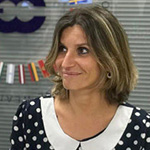
Irina Sandu, ECMWF Physical Processes Team Leader
The complexities of clouds contribute significantly to uncertainties in weather prediction and climate projections. So, field studies like the EUREC4A (Elucidating the Role of Clouds-Circulation Coupling in Climate) are vital. Taking place over 6 weeks in January/February 2020 around Barbados, EUREC4A is one the most ambitious field studies ever in atmospheric and oceanic sciences, and as such an experience not to be missed.
This was a once-in-a-lifetime opportunity to witness a coordinated international observational effort, which has the potential to change our understanding of clouds and circulation. It was also a good occasion to start discussing how the EUREC4A observations can be used to improve our ECMWF forecasts and to interact with old friends and colleagues.
So, crazy scientist that I am, I convinced my husband (and fellow ECMWF scientist) to go on holiday for a week to Barbados during the field campaign. At the peak of the bleak British winter, it seemed like the perfect solution to get a bit of the EUREC4A feel and some Caribbean sun!
EUREC4A’s main science questions
The German-French led EUREC4A field study is an international initiative in support of the World Climate Research Programme’s 'Grand Science Challenges on Clouds, Circulation and Climate Sensitivity', involving more than 30 national and international partner institutions, and many measuring instruments and platforms, including 5 aircraft and 4 research vessels (Figure 1 top left).
What makes EUREC4A quite special is that throughout the campaign the clouds and their environment have been very well characterised on a large range of scales (large-scale, with the divergence measurements; mesoscale; and microphysical scale). The aim of this unique approach is to advance our understanding of the interplay between clouds, convection and circulation and their role in climate change by allowing us to answer questions such as:
- How resilient or sensitive is the shallow cumulus cloud amount to variations in the strength of convective mixing, surface turbulence and large-scale circulations?
- How do the radiative effects of water vapor and clouds influence shallow circulations and convection?
- To what extent do mesoscale patterns of convective organisation (some examples of which can be seen in Figure 1 bottom left, and right) condition the response of clouds to perturbations?
- What are the implications of all of the above for how clouds respond to warming?
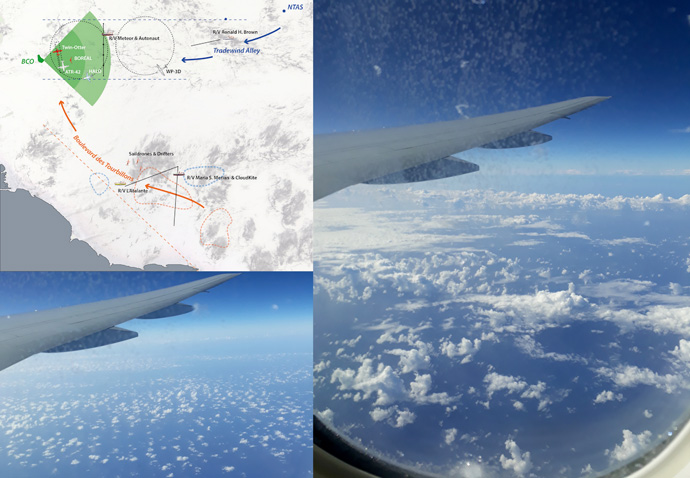
Figure 1: Sketch of EUREC4A operations around Barbados (top left), and a variety of more or less organised shallow cumulus clouds over the subtropical North Atlantic when approaching Barbados.
A long tradition in observational campaigns in the trade wind regions
My visit to EUREC4A was purposely centred around the celebratory international symposium ‘From Bomex to EUREC4A’ where I was invited to give a talk (Figure 2). The aim of the symposium was to review what we have learned from previous field campaigns focused on cloudiness in the trade wind regions (like BOMEX and RICO) and to highlight how EUREC4A can foster progress in our understanding of clouds and circulation and reduce the uncertainties in their representation in weather and climate models.
In my talk I tried to convey the fact that apart from its climate-focused key science questions, EUREC4A can also greatly help to improve the quality of weather forecasts. Through its many wind observations (from wind lidars, dropsondes and radiosondes), EUREC4A can for example help to better constrain the momentum transport by shallow convection, which is highly uncertain since we have relatively few observations of winds in the boundary layer.
EUREC4A should also help us understand why the variability in cloud fraction at cloud base in models is different from that found in observations, such as the those gathered at the Barbados Cloud Observatory (BCO). This was one of the main findings of a study we undertook a few years ago with our ECMWF Fellow Louise Nuijens (Technical University of Delft).
Another question which is highly relevant for both weather and climate models, and with which EUREC4A should help, concerns the factors controlling patterns in cloud organisation. Shallow cumulus clouds over subtropical oceans often cluster in patterns which can look like flowers, fish, gravel or sugar, but little is known as to why this is the case.
Finally, one of the big novelties of EUREC4A is that it will provide collocated observations in the atmosphere, the ocean and at their interface. As operational numerical weather prediction systems such as that of ECMWF have recently evolved towards coupled atmosphere–wave–ocean systems, such observations are key for improving the representation of this coupling and maximising the benefits that can be obtained in terms of predictive skill by running coupled forecasting systems. This is in fact considered to be one of the research priorities at ECMWF for which observational campaigns could help.
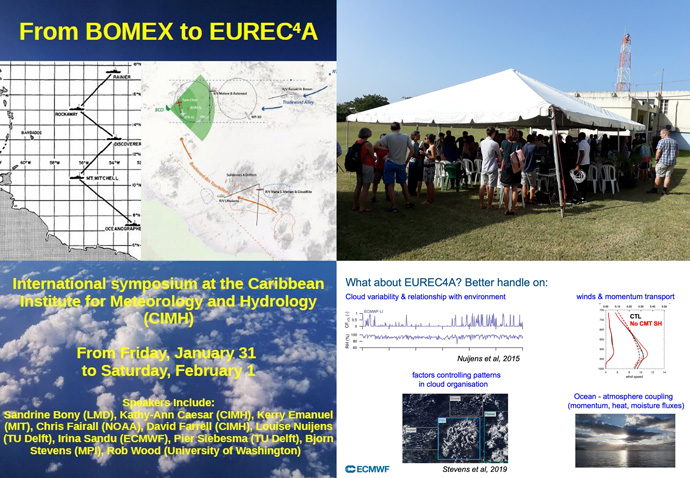
Figure 2: A celebratory day of the field campaigns that sought to improve our understanding of cloudiness in the trade winds regions: BOMEX, RICO and now EUREC4A.
An impressive observational and collaborative effort
Hopping around the island from one observational site to another (Figures 3 and 4) and spending some time at EUREC4A’s coordination centre was extremely interesting from the science point of view.
For example, the coordination of two of the research vessels (Meteor and Ron Brown) and 5 research aircraft (the German HALO, the French ATR-42, the UK Twin-Otter, the US WP-3D Orion and the CIMH RSS), which sampled the atmosphere with airborne instruments, dropsondes and radiosondes in the area east of Barbados, is truly unprecedented (Figure 3, top left). An impressive total of about 1,200 dropsondes and 800 radiosondes (most with both ascent and descent measurements) were launched during the campaign, and as their data were transmitted through GTS many were assimilated in operational forecasting systems such as that of ECMWF.
The extensive set of atmospheric measurements gathered by the research aircraft and vessels was complemented by observations from a large number of drones from University of Colorado (Figure 3, top right) and Météo-France (Figure 3, bottom right).
The observational site ‘hopping’ was also a great occasion to catch up with old friends from Météo-France and the Max Planck Institute for Meteorology (MPI-M), where I did my PhD and post-doc. For example, Greg Roberts (Figure 3, bottom left), who coordinates the Météo-France drone activity, explained the unique capabilities of the BOREAL drone (Figure 3, bottom right), which can measure turbulence and cloud properties in the boundary layer by flying autonomously for 8 or 9 hours.
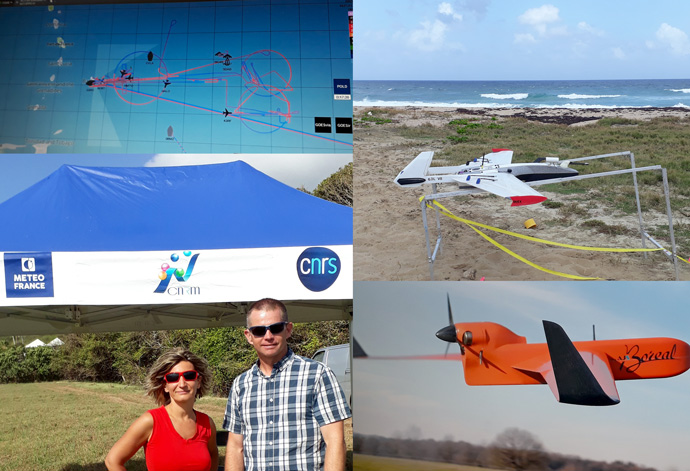
Figure 3: EUREC4A's impressive observational efforts including four ships, 5 aircraft (top left coordinated flight), and many drones from University of Colorado (top right ) and Météo-France (bottom right). Bottom left: me with Greg Roberts (CNRS/Météo-France). See EUREC4A infographic of observational platforms and field operations.
The Barbados Cloud Observatory
I visited the BCO (Figure 4, right) when it was first set up in 2009 (through the cooperation between MPI-M, CIMH and the Museum of Barbados). Many instruments have been added since then and are regularly used to evaluate weather and climate models, for example in some of the studies that ECMWF Fellow Louise Nuijens has been leading.

Figure 4: Revisiting the BCO and discussing with our ECMWF fellow Louise Nuijens (Technical University of Delft) how the data from the observatory and the many other platforms deployed in EUREC4A can help us understand the relationship between wind shear and cumulus clouds.
It was great to discuss with Louise how we can further use the observations gathered at the BCO and EUREC4A to understand the relationship between winds, and in particular wind shear, and shallow cumulus clouds. Two beautiful examples of shallow cumulus in forward and backward wind shear conditions can be seen in Figure 4 (left and centre).
A truly collaborative spirit
One of the things that impressed me the most perhaps, apart the outstanding observational effort, is the truly collaborative spirit among the German, French, Caribbean, British and American teams. The eagerness to take advantage of the time spent together not only to plan the day-to-day field campaign operations, but also to have enthusiastic and fruitful scientific discussions both during formal events and meetings and over dinners, lunches or even beach breaks never ceases to amaze me (Figure 5).
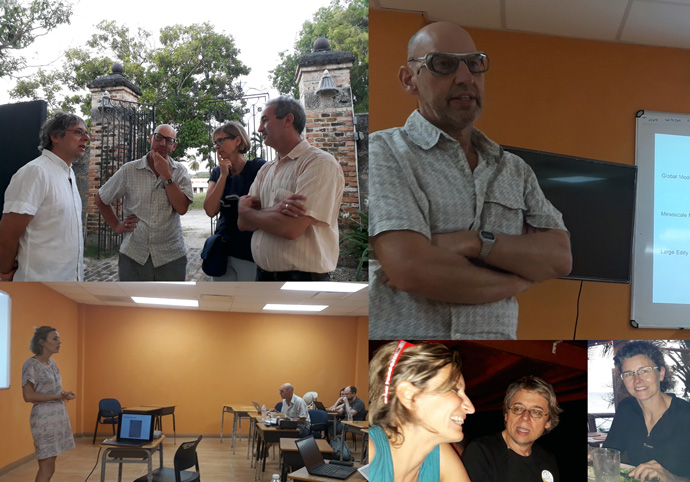
Figure 5: Many exciting discussions took place with the EUREC4A Principal Investigators (Bjorn Stevens and Sandrine Bony, bottom-right corner) and colleagues from ECMWF Member States (Pier Siebesma and Louise Nuijens, TU Delft, Susanne Crewell, University of Cologne) and US (Robert Pincus, NOAA).
Also impressive, and good news for the future of weather and climate research, is the engaged participation of many young scientists, particularly from around the Caribbean, which was made possible by the great support of CIMH.
All in all, I am delighted that I could be part of the EUREC4A family and take part in these exciting discussions. It was a week to remember, and more proof that for (passionate scientists like) me, mixing business and pleasure somehow works, probably because the line between the two is very blurred 😊.
Acknowledgements
Collaboration and discussions with many colleagues have made this blog possible, including:
EUREC4A’s main Principal Investigators (PIs) Bjorn Stevens (Director of the Atmosphere Department of MPI-M), Sandrine Bony (Directeur de recherche CNRS/IPSL) and David Farrell (Director of the CIMH)
Louise Nuijens (Technical University of Delft) and ECMWF Fellow
Pier Siebesma (Technical University of Delft) and Robert Pincus (NOAA)
And many others…
